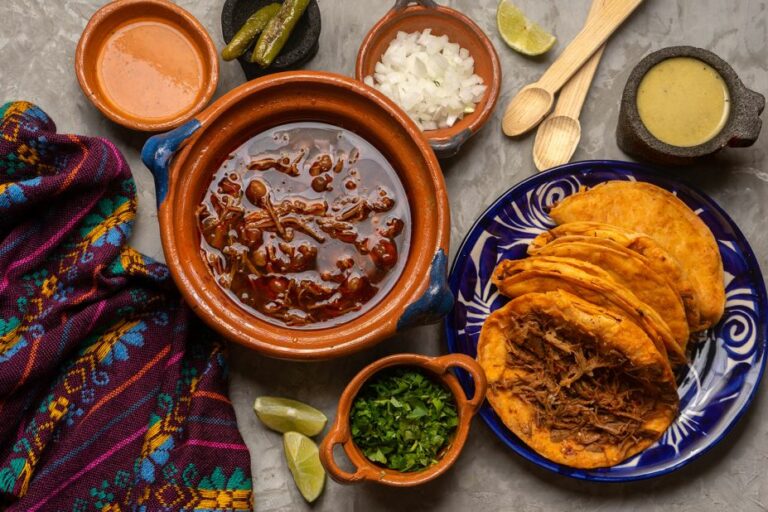Introduction: Mexican cuisine and dietary restrictions
Mexican cuisine is known for its rich and bold flavors, influenced by a fusion of indigenous and Spanish traditions. However, like many other cultures, Mexican cuisine has its own set of dietary restrictions that are influenced by both religion and culture. These restrictions vary depending on the region and can impact the ingredients used in traditional dishes.
Religious dietary restrictions in Mexican cuisine
The predominant religion in Mexico is Catholicism, which follows several dietary restrictions during certain holy periods such as Lent and Holy Week. During this time, Catholics abstain from eating meat on Fridays and some may also refrain from consuming animal products altogether. As a result, seafood becomes a popular alternative during these periods, leading to the creation of dishes like ceviche and shrimp cocktails.
The influence of Catholicism on Mexican cuisine
The influence of Catholicism on Mexican cuisine can also be seen in the use of ingredients like corn, which was originally a sacred crop for the indigenous people of Mexico. The tradition of making tamales during the Christmas season is believed to have originated as a way to honor the birth of Jesus. The use of chiles and other spices in Mexican cooking is also believed to have been influenced by the Catholic Church, which used them to mask the smell of decaying meat during the Middle Ages.
Cultural dietary restrictions in Mexican cuisine
In addition to religious dietary restrictions, Mexican cuisine also includes cultural restrictions that vary depending on the region. For example, certain indigenous communities in Mexico do not consume pork due to cultural beliefs. In some areas, it is also considered taboo to eat certain animals such as rabbits or armadillos.
The role of traditional beliefs in dietary practices
Traditional beliefs also play a significant role in Mexican dietary practices. For example, the use of certain herbs and plants in traditional medicine is often incorporated into cooking. Additionally, the concept of “hot” and “cold” foods is also prevalent in traditional Mexican culture. Some believe that certain foods are inherently “hot” or “cold” and that consuming too much of one type can lead to an imbalance in the body.
Conclusion: Diversity and adaptability in Mexican cuisine
Despite the various dietary restrictions, Mexican cuisine is a diverse and adaptable cuisine that has been shaped by a variety of cultural and religious influences. From the use of indigenous ingredients to the influence of Catholicism, Mexican cuisine has a rich history that continues to evolve as new cultures and traditions are integrated. Whether it’s a traditional mole or a modern take on tacos, Mexican cuisine continues to captivate and inspire food lovers around the world.

